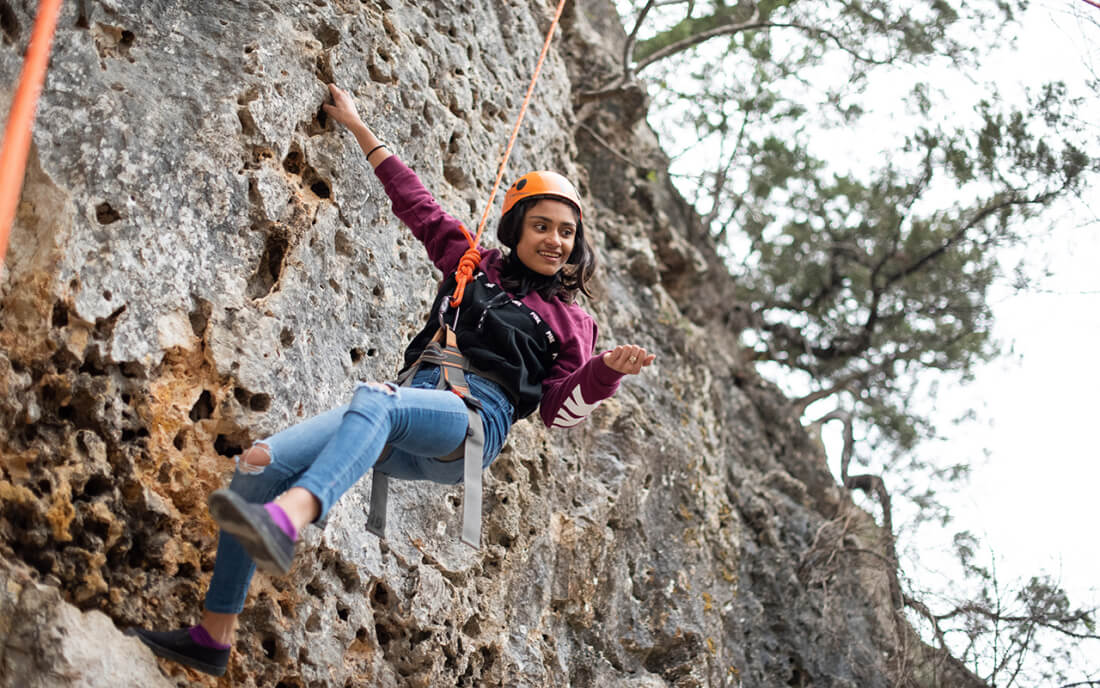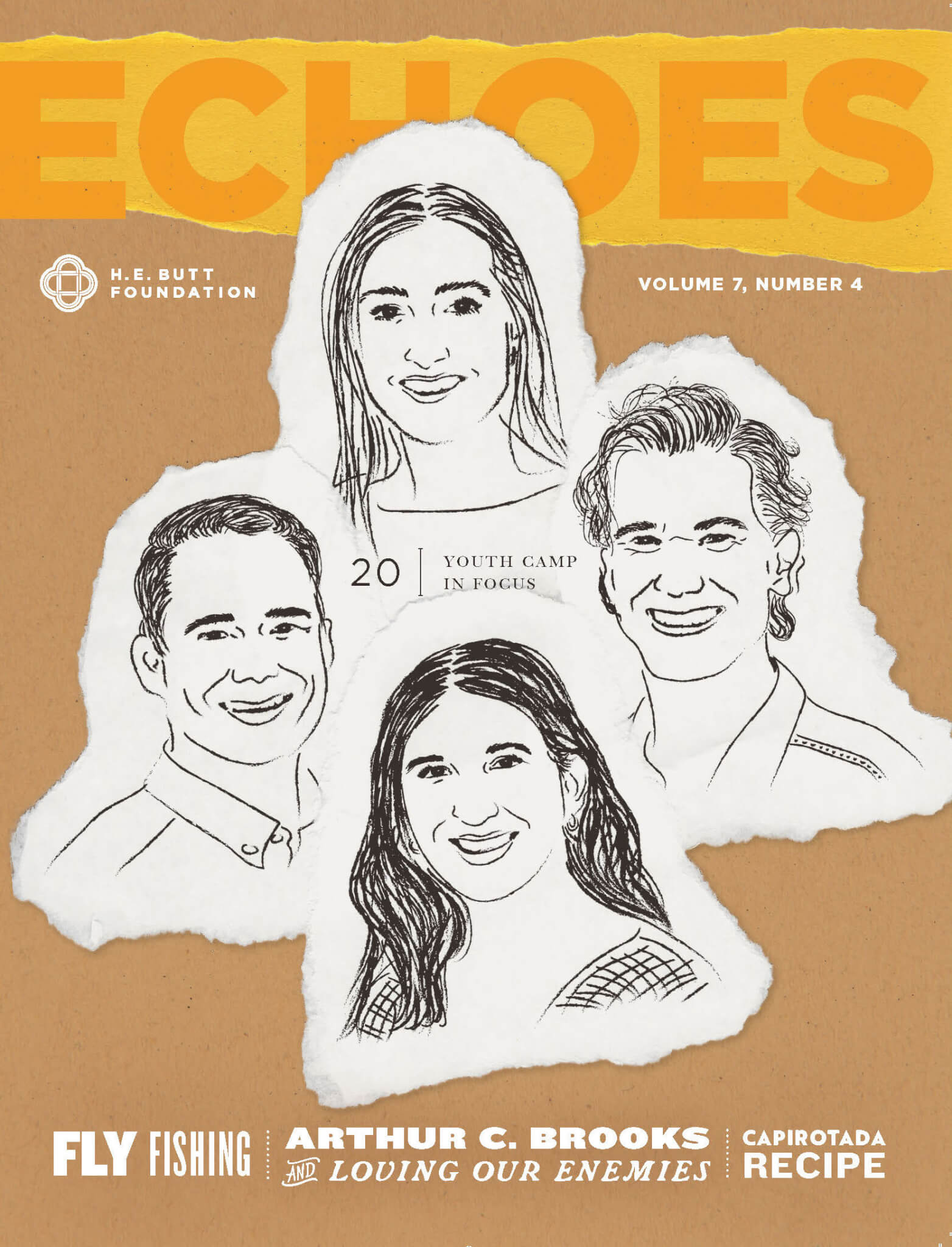
![]()

Can a person have thousands of friends, but feel alone? Hundreds of views, but feel unseen? An inbox full of messages, but feel unheard?
Sometimes it seems we’re treating children today as lab rats in a grand social experiment exploring these questions. Teens and tweens definitely feel the weight of these questions, whether they articulate them or not. Around the time they were born, with the advent of the smartphone, face-to-face interactions began to be replaced with scrolling fingers and screen-glued eyes. The world has shifted, and today’s youth are the first generation to absorb that shift.
Today’s youth are suffering from an “epidemic of loneliness” says Richard Louv, author of Last Child in the Woods: Saving Our Children from Nature-Deficit Disorder. Screen culture reduces meaningful interactions, which gives rise to increased social isolation. In a 2018 survey, the global health service company Cigna found that each generation feels increasingly more isolated, leaving what we’re calling “Generation Z” the most socially detached.
These feelings of seclusion can lead to anxiety and depression and have been linked to the rise in suicide among adolescents. A recent report by the Center of Disease Control and Prevention showed that suicide rates among youth people spiked 56 percent between 2007 and 2016.
“Green space fosters social interaction and thereby promotes social support.”
Richard Louv
What to do? A range of interventions and culture shifts are needed, but one especially effective tool might surprise you: Get these kids outside.
Louv’s work reveals that time spent in nature correlates with a decline in anxiety and depression, as well as an increase in a sense of belonging. As Louv writes, “Green space fosters social interaction and thereby promotes social support.” In other words, kids who get outside make connections with other kids.
The H. E. Butt Foundation camp property sits on nearly 2,000 acres of beautiful waterfronts, rugged terrain, and a variety of plant and animal life that, in effect, answer Louv’s clarion call. Every spring and fall, the Outdoor School program hosts 3-day retreats, primarily for urban schools in low-income districts, filled with adventurous outdoor activities geared to cultivate relationships and build healthier adolescents.
“There are massive amounts of challenges facing students, schools, and communities,” says Outdoor School director Erik Silvius. His list of core concerns includes “bleak levels of physical health, feelings of isolation resulting in mental health struggles, lack of community connectedness, and fewer relationships with nature.”
He’s right. A 2015 report by Common Sense Media revealed that 8- to 12-year-olds spent an average of 4 hours and 36 minutes on screen media every day. Research among an older age group shows that roughly 20 percent of 14- to 17- year-olds spent 7 hours or more a day on screens.
So what happens when students go from hours and hours of scrolling, typing, and double-tapping to three days with no phone service?
“Without cell phones and other distractions, the students were able to connect through face-to-face communication, which forges relationships that otherwise would not have happened,” says Coach Corey Bedell of Roosevelt High School, a San Antonio school that has attended Outdoor School for four years running. “Most of the students maintain their connection even after returning home.”
A 2017 study by the International Journal of Environmental Research and Public Health showed that spending time together in an outdoor classroom setting correlated with improved teamwork and communication skills, social relatedness, and respect of others. The study concluded that the outdoor classroom setting promotes trusting relationships and a sense of belonging.
Testimonies from Santa Rita Elementary in San Angelo retreat confirm that there’s something special about the outdoor setting. Holly Hall, a teacher at Santa Rita, put it this way: “I have seen friendships grow and watched our students develop a sense of togetherness that may not have been as easy to cultivate in a regular school environment. Hands down, this trip helps our grade become a stronger family and enhances our relationships for the rest of the year.”
“The conversations the kids had between them, even kids they would not normally talk to in a school setting, was really neat to see”
Morgen Smith, Santa Rita Elementary
If you bring yourself back to grade school or high school, you’ll remember how important it was to sit with the right group at lunch or have the right people in your group project. But at these retreats, students are put into cabins and activity groups at random. Santa Rita Elementary teacher Morgen Smith was surprised, as many teachers are, at the ease in which students from different social groups connect in this special environment. “The conversations the kids had between them, even kids they would not normally talk to in a school setting, was really neat to see,” she says.
She explained how the students who were afraid of fishing had other kids help them bait the pole. “Watching them communicate to one another, helping each other, and accomplish catching a fish was inspiring,” says Smith. And the bonding continued through other activities: “They encouraged each other on the hike and praised each other when one struggled. In the cabins, they bonded by telling ghost stories, which they still talked about months later.”
What else draws students together? Vulnerability. Social media platforms revolve around appearance, and hiding behind a profile allows users to basically create their ideal image. In a report called “Status of Mind,” the Royal Society for Public Health found that this unrealistic pursuit of perfectionism causes comparison, low self-esteem, and anxiety disorders, particularly among girls.
“...trying these new things was incredibly fulfilling, and I was met with more kindness, encouragement, and understanding than I expected.”
Roosevelt High School student
Fortunately, days in the Canyon are full of sweat, bug spray, and helmet hair, and there are no filters in the outdoors. Standing at the top of a zip line or dangling from a rope has a way of exposing everybody, but you may be shocked at the empathy you see among students who face these challenges together.
“To try new things alone, at your own pace, is one thing—to do it in front of others, vulnerable and maybe not the best, can be scary,” explains a student from Roosevelt High School. “However, trying these new things was incredibly fulfilling, and I was met with more kindness, encouragement, and understanding than I expected.”
Another student from the same school says, “Being able to go on this trip was an unexpected treat.” She added that opportunities like this retreat are unusual for her. “Sometimes the burden of modern life can be crushing, and you need to be reminded what being equal to every living thing feels like. This is such an important program for kids like me.”
Compass Rose Journey is helping its students and teachers to get off the couch and into the outdoors.
